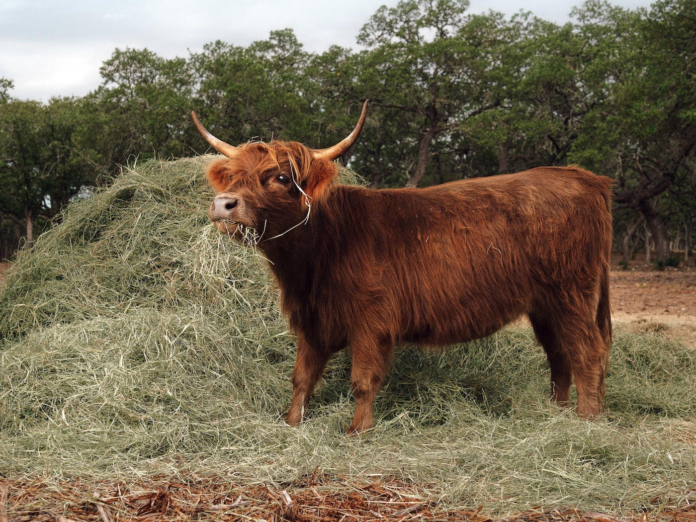Raising cattle is never an easy job. If you consider raising cows in our place, we should know how to completely take care of them. Here we have guide about Mini Highland Cows.
Talking about mini highland Cows, you all know that these cows are quite small in size, but that doesn’t make a big difference. Mini highland cows are smaller versions of domestic cows, having similar habits, characters, and eating habits, bringing you a difference in size.
Here in this article, you will get to know about mini highland cows, their size, their habitat, feeding, and an overall guide to these miniature cows ~ the small cattle breeds.
About mini highland cows
Thought of keeping cattle which can be used for both milk and meat? Sounds illogical ?!! Right! but what if there are a few cows who are the mini versions of the full-sized cows, yes you heard right. It’s about the miniature cows, the mini highland cows which generally suffer from dwarfism or have been bred by their owners for their smaller size.
The Scottish Highland cattle breed is the source of miniature Highland cows. One of the oldest breeds of cattle is these mini Highland cattle. It was in 1884 that the first Highland cattle herd was bred. The farmers generally breed two creatures, mainly different ones, to form these highly selective miniature cattle. Highland cows are known for their rough and tough nature and fertility rates. These cattle are very easy to raise, which makes them popular among rural ranchers.
History
Since the Highland cow first appeared in the sixth century, it may perhaps be one of the world’s oldest cattle breeds.
The Scottish Highlands and islands are where the term “Highland Cow” originates. The Highland Cattle Association was established as a result in 1884, and the first herd was noted the following year.
The breed was initially categorised as either Highlander or West Highlands (also known as Kyloe). The Kyloes were typically smaller creatures with coats that were black, brownish-orange, or yellowish-brown in colour. While the coats of the larger, greyish-brown-coated Highlanders were darker.
Highland cows have evolved to fit the conditions of the environment in which they flourish. They have an oily outer coat that can reach a length of 13 inches and a downy undercoat.
They can grow an outer coat up to 13 inches long, which is longer than their undercoat and is oily, allowing them to shed snow and rainfall.
Although Highland cows typically have a double coat that is brownish, they can also be black, dun, yellowish, white, silver, or even red.
Nature, character and attributes
These adorable animals’ lengthy horns and bangs are their most distinctive features. The cattle’s long fringe likely serves a functional purpose in addition to being aesthetically pleasing by deterring insects from landing in the eyes.
To adjust, fluffy cows start shedding their thick coat in the cooler springtime and significantly lessen their hair growth in the summer.
The lengthy, thick coat then grows back in the winter. This demonstrates that the fluffy coat of the Highland cow is not in its constant state.
The horns of a bull are thicker with a wider base, curve forward with a small rise towards the tips, and are longer and more slender than those of a cow.

Feeding of Mini Highland Cows
Highland cows are excellent conservation grazers because of their small weight. When given access to fresh water and brush, this robust kind of cattle can thrive.
Highland cattle can access plants in the winter by digging through the snow with their horns.
However, owners also utilise various specialised diets appropriate for their fold throughout the winter, such as silage, straw, or hay.
They consume a lot of wheat, barley, and other grains.
Benefits
Contrary to popular belief, high-quality beef is not the primary reason fluffy cows are raised.
Highland cows do not have a thick coating of fat like other cattle breeds do because of their double-layered coat, which helps them stay warm throughout the changing seasons of the year.
In this way, this breed of the cow may produce lean, well-marbled beef that is high in flavour, protein, and nutrients yet low in cholesterol, with a fat percentage that is comparable to fish and chicken.
Milk can be produced by miniature cows. It is not much, but it is plenty for a family and perhaps a few neighbours.
A modest amount of milk makes it easier to use because there is less work and no need to worry about what to do with the extra.
The thing works as a cherry on the top, if you enjoy working with your hands, you can even try your hand at creating cheese and butter.
A little cow has a lot of meat, despite its diminutive stature. It provides a family with beef for an entire year.
The cons
Today, crossbreeding of the Highlands is primarily due to the declining market for high-quality meat. That said, crossbreeding Highlands with other cattle breeds dates back to the early 20th century when the breed began being exported worldwide.
To address the rising popularity of low-cost meat options, owners are breeding Highland cows with bulls of other breeds like the Limousin and Shorthorn. This results in high-quality beef with a competitive market value.
The crossbred cows also inherit the innate features of their Highland mothers.
Genetic manipulation
The falling demand for premium meat today is the main cause of Highland crossbreeding. Yet, the practice of crossing Highland cattle with other kinds of cattle dates back to the early 20th century, when the breed started to be exported all over the world.
Owners are mating Highland cows with bulls of other breeds, such as the Limousin and Shorthorn, to counter the increased demand for affordable meat options. As a result, premium beef with a competitive market price is produced.
The genetic characteristics of their Highland moms are also inherited by the crossbred cows.
Things you must know:
Highland cows are calm, docile animals who hardly ever display aggressiveness. This is a result of their high intelligence and awareness of their place in the social hierarchy.
Thus it makes sense that they would want to be with others, get love and attention, and satisfy their curiosity. Highland cows are particularly simple to breed and take care of because of their friendliness.
But, be careful whenever you are close to folds that have calves because the cows might be aggressive.
The Doosan is another name for the lengthy fringe on Highland cows.
While a herd of cattle is typically referred to as a herd, Highland cattle are referred to as a fold.
It is said that the queen’s fondness for the darker Highlander breed led to the selective breeding that started the collapse of the Kyloe breed.
Highland cows favour foraging over barn-based feeding.
Highland cattle may eat up to 154 pounds of grains per day while grazing for up to 8 hours each day.
According to popular belief, Queen Elizabeth only consumed meat from her Highland cattle fold.
Where to get this
Finding good farm animals is now easier because of the rise in homesteading and hobby farming. Breeders of tiny cows are now more numerous than ever.
Searching online for a local breeder is the easiest approach to getting a small cow. It is simpler if you are not very picky about the breed since this can significantly narrow down your search.
You can also connect with the community of hobby farmers and homesteaders.
The conclusion
Miniature cows are an excellent choice if you’re trying to expand your homestead’s animal population. They are adorable and cuddly and require less food and space. You can still obtain a consistent supply of milk from these cows, as well as a sizable quantity of meat if you so want.








